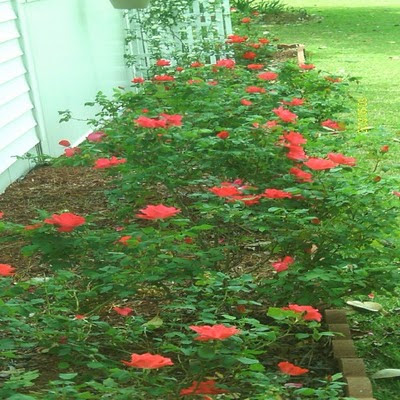Oleander a toxic beauty...
One shrub you are likely to see here and there throughout South Carolina is the Oleander shrub. Because of its specific liking for hot drought climates, it is a good choice for the landscape. However there are important things to know about this plant before you decide to plant.
Oleander is one of the most poisonous plants in the world and contains numerous toxic compounds, many of which are deadly to people, especially young children, they are also poisonous to animals. That being said, most animals instinctively avoid consuming this plant.
Oleander is an evergreen shrub or small tree in the dogbane family Apocynaceae, toxic in all its parts. It is the only species currently classified in the genus Nerium. It is so widely cultivated that no precise region of origin, perhaps in southwest Asia, has been identified as its country of origin.
It is seen widely planted in areas throughout the southern region of the US on old abandoned landscapes and also in many highway landscape plantings. Despite its well-recognized toxic potential, the oleander has been used in traditional medicine for centuries. It was used by primitive people as arrow and dart poisons.
Although Oleander and all of its parts are poisonous to humans and animals if consumed, it is not without it's predatory insects. Oleander can be infested by scale insects and mealy bugs. Plants thrive in good loamy soil, and it is not difficult to have good specimens if attention is paid to resting and cutting them back after flowering, and subsequent shaping and feeding when growth is active.
Good well-ripened shoots arc essential for free flowering, so they should be fully exposed to air and light. Propagated by cuttings of mature wood, which are often rooted in water. This method is convenient and easy for the gardener to attain success.
Oleanders are well suited for the Southern climate being drought tolerant and heat loving. This being said, as with many shrubs and flowers grown in zones 8 and up, a little afternoon shade will do well for the plant.
To handle this plant safely and keep it well cared for, it is recommended that the homeowner use thick rubber gloves to prune, cut back or plant. If your skin does come into contact be sure to wash your hands thoroughly after doing so. Do not use the wood cuttings to burn in fireplaces or for grills outdoors.
Oleanders may be infested with mealy bugs, soft scale and white or oleander scale. To control all these, fumigate greenhouses or spray plants repeatedly with nicotine or pyrethrum and soap. In Fla. a fungus often causes witches brooms (which see) on this host.
The plants are stunted and flower production ceases. Prune out all brooms together with 12 in. of the branches on which they are growing; then spray with 3-3-50 bordeaux mixture. Burn all prunings. This flowering shrub is a stunning plant and easy for most gardeners to grow.
By simply applying common sense and ordinary care, this shrub can be a beautiful part of your southern garden.





